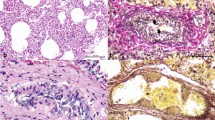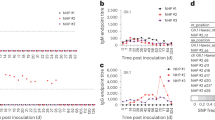Abstract
GROUP B Coxsackie viruses have been shown to be capable of producing a severe pancreatitis in weanling and adult mice1. Necrosis of pancreatic acinar tissue occurs within a few days of infection and involves a high proportion of the cells in affected areas. These observations, together with the affinity of necrotic tissue for acid intravital dyes, have been utilized in the development of a technique for the rapid titration of pancreatotropic group B strains in weaned mice. Briefly, the technique is as follows.
This is a preview of subscription content, access via your institution
Access options
Subscribe to this journal
Receive 51 print issues and online access
$199.00 per year
only $3.90 per issue
Buy this article
- Purchase on Springer Link
- Instant access to full article PDF
Prices may be subject to local taxes which are calculated during checkout
Similar content being viewed by others
References
Pappenheimer, A. M., Kunz, L. J., and Richardson, S., J. Exp. Med., 94, 45 (1951). Howes, D. W., Aust. J. Exp. Biol. and Med., 30, 423 (1952), and in the press.
Reed, L. J., and Muench, H., Amer. J. Hyg., 27, 493 (1938).
Melnick, J. L., and Ledinko, N., J. Exp. Med., 92, 463 (1950).
Dalldorf, G., and Gifford, R., J. Exp. Med., 96, 49 (1952).
Author information
Authors and Affiliations
Rights and permissions
About this article
Cite this article
HOWES, D. Intravital Staining in Titrations of Group B Coxsackie Viruses in Weaned Mice. Nature 173, 270–271 (1954). https://doi.org/10.1038/173270a0
Issue Date:
DOI: https://doi.org/10.1038/173270a0
Comments
By submitting a comment you agree to abide by our Terms and Community Guidelines. If you find something abusive or that does not comply with our terms or guidelines please flag it as inappropriate.



